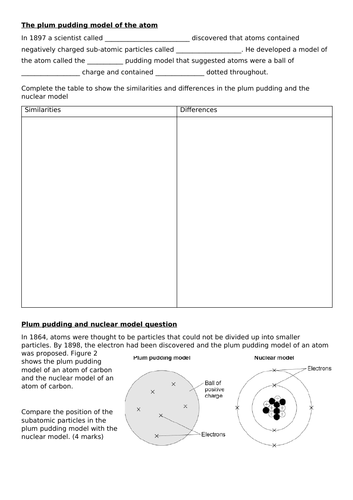


A double lesson/ series of lessons suitable for trilogy/ triple physics describing the structure of the atom, the role of scientists in the development of the atomic model and explaining what an isotope is. The lesson features:
- A short recap quiz numbered 1-10 on naming parts of the atom, describing the charge/ mass of sub-atomic particles and their position in the atom (linking to Topic 1 - atomic structure in the Chemistry trilogy syllabus
- An explanation for the definitions of mass and atomic number linking to students’ understanding of the relative masses of protons, neutrons and electrons
- Practice questions on calculating P, N, E, describing the structure of atoms of particular elements from both images and chemical symbols and interpreting the mass/ atomic number for an atom from an image
- An explanation for the meaning of the term ‘isotope’ linking to easter eggs and a scaffolded example of what an isotope is comparing element symbols for chlorine
- Practice questions on describing the difference between isotopes from bot the chemical symbol and atomic structure diagrams
- A description of the contributions/ experimental work from scientists in the development of the atomic model, paying particular focus to the plum pudding model and alpha particle scattering experiment
- Discussion questions to help pupils visualise the abstract concept of the plum pudding model by comparing the plum pudding model to a bouncy ball
- A suggested modelling activity (detailed in the slide notes) involving students acting out the alpha scattering experiment and suggestions for how to evaluate this with pupils
- A worksheet containing a gap fill task and practice questions comparing the plum pudding model to the current nuclear model of the atom and explaining the findings of the alpha scattering experiment.
- A timeline task for students to complete to show the role of scientists in the development of the model of the atom. The activity also has differentiated resources in the form of a cut and stick with model images and descriptions of scientists roles.
Something went wrong, please try again later.
This resource hasn't been reviewed yet
To ensure quality for our reviews, only customers who have purchased this resource can review it
Report this resourceto let us know if it violates our terms and conditions.
Our customer service team will review your report and will be in touch.
£3.10